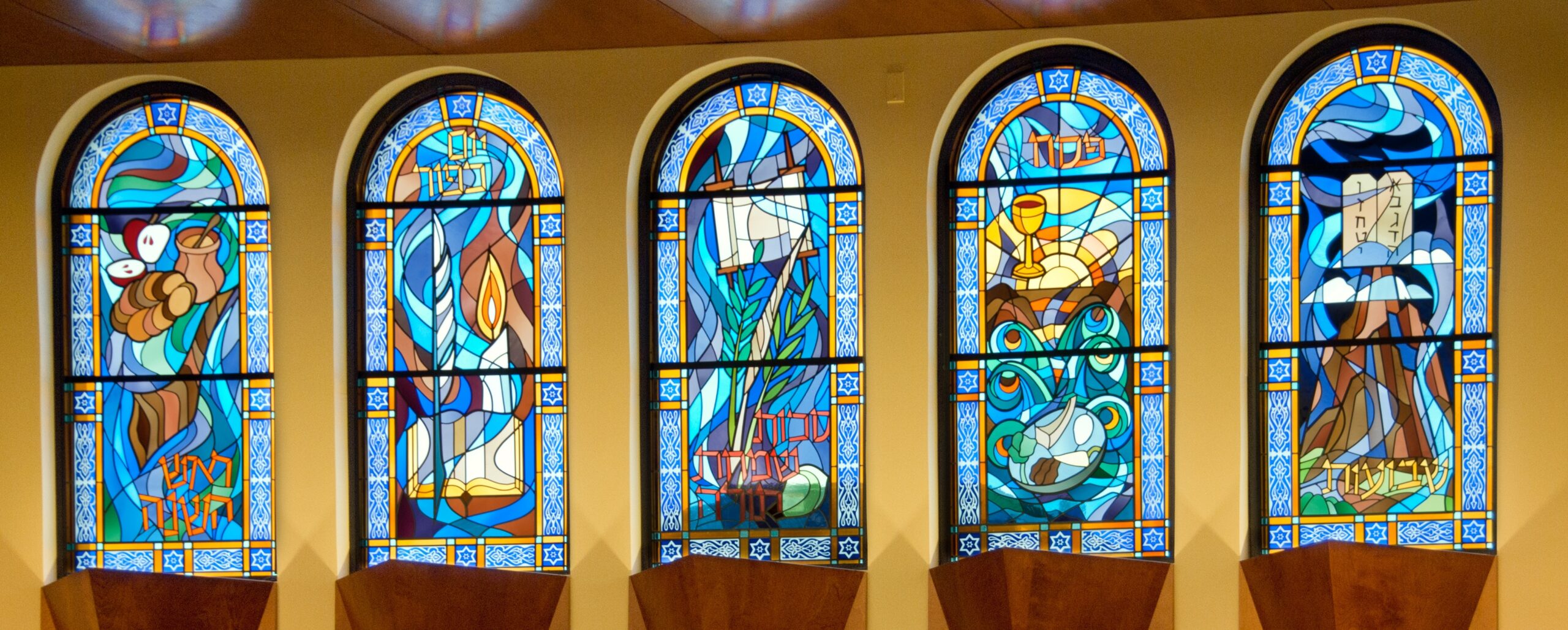 Beth El Temple celebrates the Jewish holidays in ways that are both traditional and innovative as we seek to bring the meaning, wisdom, and relevance of each holiday to the lives of our members. We celebrate with people at all levels of Jewish experience and knowledge, providing introductions to the holidays for those who are new and also deep, meaningful worship for the more experienced.
Beth El Temple celebrates the Jewish holidays in ways that are both traditional and innovative as we seek to bring the meaning, wisdom, and relevance of each holiday to the lives of our members. We celebrate with people at all levels of Jewish experience and knowledge, providing introductions to the holidays for those who are new and also deep, meaningful worship for the more experienced.
The celebration of Shabbat each week and the Jewish holidays throughout the year helps our community build a sense of kehillah kedosha, holy community. Regular worship also helps us to connect with God’s presence in the world, enabling us to grow in our Jewish Journeys.
The following descriptions will give you a sense of each holiday as well as the ways that we observe them at Beth El Temple. For more specific information about this year’s activities, please see our calendar. For more information about Jewish holidays and observances, please consult the following websites: uscj.org, myjewishlearning.com.
The following holiday explanations were derived from Congregation Torat El’s (Oakhurst, New Jersey) website.
Jewish tradition teaches that the month prior to the Yamim Noraim, the High Holy Days, is to be marked by active reflection as we work to improve our relationships with God, with ourselves, and with other people in our lives. We are taught to spend one month engaged in the process of cheshbon hanefesh, personal introspection, and teshuvah, repentance, as we prepare ourselves to begin a new year. In this month our rabbi will typically teach classes to help us learn about the work of teshuva and begin to prepare our souls for this process. The month of Elul is also marked by the sounding of the Shofar each morning, which serves as a reminder to “wake up” and take hold of this unique opportunity for personal growth. During Elul we add Psalm 27 in our morning and evening services which declares, “The LORD is my light and my help; whom should I fear?” and explore the nature of God’s presence in our lives. At the end of Elul we hold Selichot services in which we recite penitential prayers, inaugurating the theme of repentance and return in this season.

Rosh Hashanah, the New Year, also called Yom Hadin (the Day of Judgment) and Yom Teruah (the Day of the Sounding of the Horn), marks the beginning of a new year in the Jewish calendar. It is a two day period centering upon the themes of creation and renewal, God’s sovereignty in our world, and the ways in which we can work to improve ourselves and our daily lives through self-reflection and renewal. On Rosh Hashanah we hold morning and evening services at Beth El in which the entire community gathers to pray, celebrate, and begin our process of repentance. Rosh Hashanah also begins the Aseret Yemei Teshuvah, the Ten Days of Repentance, in which we are to make a serious effort to repair damaged relationships and improve on those areas in which we missed the mark during this past year.
In the afternoon on the first day of Rosh Hashanah we gather together with our broader Harrisburg Jewish community to do a ritual called Tashlikh in which we take crumbs of bread and symbolically cast them into the Susquehanna River, a flowing body of water, symbolizing the washing away of our sins from the past year.
Please see our High Holy Days page for more information about attending Rosh Hashanah and Yom Kippur services at Beth El Temple.
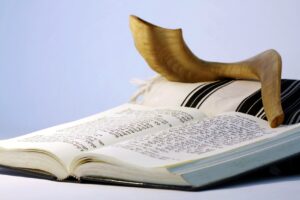
Yom Kippur, The Day of Atonement, is the culmination of our period of reflection and renewal. On Yom Kippur, we come before God to ask forgiveness for any sins that we have committed against God and for which no other individual can forgive us. Yom Kippur is a day in which we take time to reflect on the nature of our relationship with God and set aside our worldly pleasures and concerns. On Yom Kippur, Jewish adults above the age of bar or bat mitzvah refrain from eating or drinking for twenty-five hours and also refrain from bathing, wearing leather shoes, and engaging in intimate relations with partners. All of these practices, in addition to wearing white like a Jewish burial shroud, serve to connect us to our mortality, reminding us of the seriousness of the day and of the importance of repairing our relationships with God and one another.
At Beth El Temple, our High Holiday service is led by our Rabbi Ariana Capptauber, along with a Cantor and active involvement from congregants who lead parts of service and read Torah. We also have engaging and creative High Holiday experiences for our youth and babysitting available. We begin with Kol Nidre services on the evening of Yom Kippur, as well as in the morning and afternoon. Services include Yizkor, the memorial prayer in honor of our loved ones who are no longer with us. During the break between our morning and evening service, we sometimes study together a theme relevant to the day. Our Yom Kippur experience ends with Ne’ilah, an uplifting and inspirational service that culminates with a communal sounding of the Shofar.
Please see our High Holy Days page for more information about attending Rosh Hashanah and Yom Kippur services at Beth El Temple.
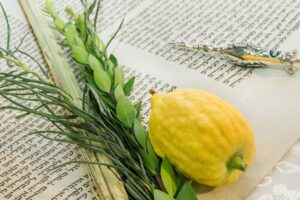
Sukkot, the festival of booths, commemorates the forty-year period when the Israelites wandered in the desert and lived in temporary dwellings. It is one of the shalosh regalim, the three central festivals of the Jewish calendar, and is celebrated for 7 days, culminating in the holiday of Shemini Atzeret (the eighth day of assembly).
The key ritual of Sukkot is the building of temporary huts or booths in remembrance of the sukkot dwellings that the Israelites lived in while wandering in the desert. Each family is commanded to build and decorate their own Sukkah, and people often visit one another’s family sukkahs in a “Sukkah hop.” We also have a communal Sukkah at Beth El; this holiday is a wonderful opportunity for building community as we celebrate the joy of this holiday outdoors. We offer a number of opportunities for people to gather together (and eat, of course!) in our Sukkah. We also hold services on the first and last holy days of Sukkot, as well as daily minyans during the interim days.
Sukkot is also called Hag Ha’asif (the Holiday of the Ingathering) because during this time of year the Israelites conducted their final ingathering of produce before the winter came. As part of this agricultural heritage we gather together arba minim, four species: the etrog (a citrus fruit native to Israel), lulav (palm branch), hadas (three myrtle branches), and the aravah (two willow branches). At our services we gather these together and wave them, symbolizing God’s presence everywhere. During our morning weekday services we also parade with them while chanting prayers called Hoshanot. Anyone who comes to services at Beth El Temple will receive a sheet with instructions on how to do this as well as some interpretations concerning the four species over which a blessing is recited. For those who are unsure of what to do, congregants will be happy to guide them.
Yet another name for Sukkot is Z’man Simchateinu (the Season of Our Happiness), named because we come together to rejoice and celebrate after the serious season of the High Holy days. The theme of joy and celebration that accompanies Sukkot is continued during the festivals of Shemini Atzeret and Simchat Torah. The holiday of Shemini Atzeret, literally “the eighth day of assembly,” is celebrated because God told the children of Israel to hold a “solemn gathering” (atzeret) on the eighth day of Sukkot. The rabbis interpreted this to mean that God asked the children of Israel to tarry (atzeret) with God for an additional day. Celebrating Shemini Atzeret reminds us that just as we long to be connected to God, God yearns to be connected to us.
The holiday of Simchat Torah falls the day after Shemini Atzeret, celebrating the completion of the reading of a one-year cycle of the Torah and beginning the cycle anew. This holiday is full of celebration, with dancing and singing through the night and the following day.
At Beth El, we are enthusiastic about rejoicing. On Erev Simchat Torah (the night before), we sing and dance with the Torah scrolls during seven hakafot (processions) around the sanctuary. Then everyone who wishes to participate gets an Aliyah (honor of being called to the Torah). On Simchat Torah morning, after seven more hakafot and more singing and dancing, we stretch tables from one end of the fully opened sanctuary and social hall and unroll an entire scroll. We even put out markers so people can find key parts of the Torah. It is a very impressive and moving experience. As we complete the reading of the Book of Deuteronomy, we invite every member of the community to be honored at the Torah with an aliyah.
After this we immediately begin again with the first chapter of Genesis, reminding ourselves that Jewish learning and living is a lifelong process that never ends.
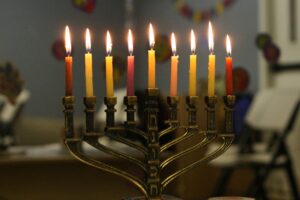
Hanukkah means “dedication” and is celebrated for eight nights and days beginning on the 25th of Kislev. Unlike most Jewish holidays, Hanukkah is never mentioned in the Tanakh (Hebrew Bible). There are two strands within the Jewish tradition regarding Hanukkah and its meaning, one preserved in the books of Maccabees (apocryphal works), and the other in the Talmud. The books of Maccabees emphasize the battles and victories of the Hasmonean (Maccabee) family, their struggle against the suppression of Judaism, culminating in the purification and rededication of the Temple of Jerusalem. The rededication was a celebration of Sukkot, lasting eight days; hence the eight days of Hanukkah.
The Talmudic tradition, on the other hand, stresses the miracle of the oil, in which the oil used to light the temple menorah, meant to last one day, ultimately lasted for eight days. The story comes from this section of the Talmud (Shabbat 21b), which barely mentions the Hasmonean battles.
Another name for Hanukkah is “Chag Ha-urim,” the “Festival of Lights.” This is because on Hanukkah we light the 8 branch candelabra known as the “hanukkiah” to commemorate the miracle of the oil that lasted eight days and eight nights. After sundown, the candles should be placed in the hanukkiah from right to left, and lit from left to right. Each night we begin by taking the shamash, the helper candle, and lighting the newest candle first, followed sequentially by the candles from the previous nights.
When Hanukkah falls on Shabbat, the hanukkiah should be lit with the Hanukkah brachot before lighting the Shabbat candles.
Some customs on Hanukkah include eating foods cooked in oil – potato pancakes (latkes) and donuts (sufganiyot) – during Hanukkah to remember the miracle of the oil recounted in the Talmud. Latkes are an Ashkenazi tradition and sufganiyot are a Sefardi tradition. Another custom is to play a game with a spinning top called a dreidel (Yiddish) or a sivivon (Hebrew) during Hanukkah. The dreidel is four sided and has one Hebrew letter on each side. In the Diaspora, the letters, nun, gimel, hey, and shin can be found on a dreidel. These letters represent the saying: Nes Gadol Haya Sham: “A great miracle happened there.” In Israel one letter changes to represent the line Nes Gadol Haya Po: “A great miracle happened here.”
On Hanukkah, gifts are often exchanged. The custom of giving children gelt (money) is an old one. Recently, as Hanukkah has had to compete with Christmas, the giving of gifts has played an increasing role in Hanukkah. (In Israel, elaborate gift giving is not widely practiced.) In addition to exchanging physical gifts, we should take time on Hanukkah to remember, and show appreciation for, the gifts and miracles that fill our lives with light throughout the year.
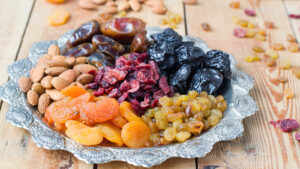
Tu B’shevat is known as the “birthday of the trees” and is an agricultural holiday today celebrated as a moment to consider the earth and our environment. Literally meaning, “the 15th of the Hebrew month of Shevat,” Tu B’Shevat was originally connected to the agricultural laws of tithing in the Land of Israel, the date when farmers offered the first fruits of their harvest at the Temple. Throughout the years, however, Tu B’Shevat has evolved. In the middle ages, the Jewish mystics of Tzevat developed the Tu B’Shevat Seder as a way to honor God’s creation of the world. With the establishment of the State of Israel, Tu B’Shevat was re-established as a holiday that connects the Jewish people with the land in Israel. Most recently, Tu B’Shevat has been set aside as a day on which Jews take a moment to celebrate the earth and our environment. At Beth El Temple, the religious school celebrates Tu B’Shevat with our students and we often hold a Tu Bishvat Seder that celebrates our connection to the earth and mystical spirituality.

Purim commemorates the victory of Esther and Mordechai over Haman, the wicked vizier of King Ahashverosh who plotted to wipe out the Jews of Shushan, Persia. Purim is a time of extreme joy and laughter, when we take time to laugh at the absurdity of a life that can sometimes seem random and unfair. According to the rabbis, as the month of Adar begins and leads up to the holiday of Purim, we are supposed to increase our joy and laughter: Mi Shenichnas Adar, Marbim be’simcha (Babylonian Talmud, Taanit 29a). We celebrate Purim with satire and laughter because laughter is a sign of life, comfort and hope even in the face of threats and obstacles. One thing we do at Beth El is create a “Spiel” — a Purim play that retells the story of the megillah in a silly way. If that sounds fun, you can watch the videos of some of our recent Purim spiels to find out more!
There are four mitzvot associated with the holiday of Purim.
On Erev Purim, Beth El hosts a family friendly Megillah reading. On Purim morning, we have a traditional Megillah reading often done together with other members of our Jewish community in Harrisburg.
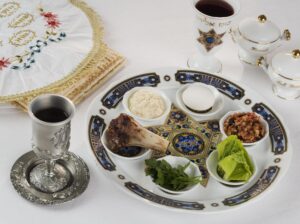
Passover celebrates the Exodus of the children of Israel from Egyptian bondage. In many ways, the Passover story is our master narrative, reminding us of the importance of freedom and our obligation to continually work to help others who are in need. On Passover, we take time to thank God for the many blessings of our freedom as we retell the story of our ancestors’ freedom from slavery. The central mitzvah of Passover is the “telling” of our story, which is exemplified by a Passover Seder, a meal during which we are to see ourselves as personally having left Egypt. This grounds us in our work of bringing freedom to those who are less fortunate in the world.
Prior to Passover, we invite people to sell their leavened products through the office to follow the mitzvah of not owning any “chametz,” or leavened bread products on Passover.
Each year Beth El hosts a siyyum bechorim, fast of the first born ceremony, in which we invite first born men and women to join us for a service and study session to remember that God saved the first born Israelites in Egypt. Those first born children who attend the service and participate in the study do not have to fast, and are invited to a special breakfast afterward. Before the holiday begins, we also offer opportunities for our congregants to give maot chitim, gifts to the poor, as we sponsor a food drive to fight hunger locally.
In anticipation of the Passover Seders, we often have family education programming and adult education opportunities around this holiday as we seek to encourage our members to bring the creativity and meaning of this holiday into their homes. As with all of our holidays, there are services throughout Passover, with the exception of the first and second evenings, as people are having their Seders. We also match up people in our community who do not have a Seder to attend with those who are happy to host them.
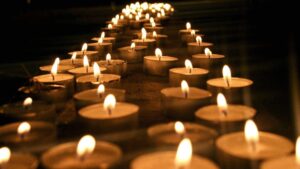
In the days following Passover, we have a number of modern holidays that have quickly become a part of the Jewish life cycle in the 21st century. Yom HaShoah commemorates the tragedy of the Holocaust and is a time when we dedicate ourselves to “never forget” the atrocities of the Nazis and fight all hatred, intolerance, and bigotry that exist in the world today. There is often a communal Yom HaShoah commemoration that takes place in order to mark this important day in the Jewish calendar.
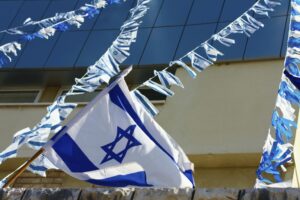
Yom HaZikaron is Israel’s Memorial day. The modern state of Israel was established, and continues to be defended by brave young men and women who risk their lives for the existence of a Jewish state. On Yom HaZikaron, we take a day to recall the sacrifice of all who have lost their lives in Israel’s wars as we hope for a day when peace will finally come to the Middle East and Israel, along with all of her neighbors, will live side by side in peace. Independence Day (Hebrew: יום העצמאות Yom Ha’atzmaut, lit. “Day of Independence”) commemorates the Israeli Declaration of Independence in 1948. The day is marked by official and unofficial ceremonies and observances.
Yom Ha’atzmaut reminds us to celebrate the existence of a Jewish state even as we do not live in Israel. And while Israel can be a complicated topic for both Jews and non-Jews, Yom Ha’atzmaut is a reminder of our responsibility to engage in conversations about Israel and explore the way that Israel intersects with our daily lives as Jews living in 21st century America.
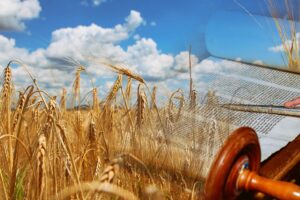
Like the other pilgrimage festivals, Sukkot and Passover, Shavuot has agricultural roots. The Torah tells us that beginning on Passover we are to count “seven weeks” (Shavuot) from the beginning of the grain crop until the end of that harvest. In Israel, the spring harvest begins during the Passover season. In the biblical period, people would bring an offering of thanksgiving, as well as their new crop, to Jerusalem during this time of year to be eaten as a sign of appreciation and thanksgiving for God’s beneficence. The agricultural aspects of this holiday are commemorated today by the counting of the Omer, a biblical measurement of grain that was to represent a portion of the crop brought daily during the forty-nine days between Passover and Shavuot. In the rabbinic period, after the Temple was destroyed, Shavuot became associated with the giving of the Torah—an event traditionally understood to have occurred during this time. That is why Shavuot is also called Z’man Matan Torateinu, the time of the giving of the Torah. On Shavuot we celebrate the gift of Torah and remind ourselves of the profound impact that the Torah can have in our daily lives.
At Beth El Temple, we celebrate Shavuot with a late night study, a Tikkun Leil Shavuot, in celebration of the gift of Torah in our lives. We also honor the long standing tradition of eating dairy on Shavuot by enjoying cheesecake during our study!
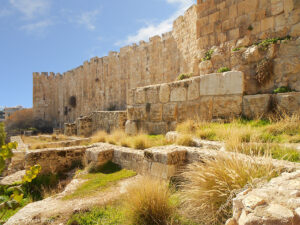
The Ninth of Av commemorates the destruction of both Temples, the Expulsion of the Jews from Spain, and many other tragedies of Jewish history that fell on or around this day. It is a day of fasting and mourning. The signature observance is the reading of the Book of Eichah (Lamentations) to a distinctive mournful chant.
At Beth El Temple, we add English readings from different eras of Jewish history as we read the book of Lamentations to gain perspective on the historical tragedies that have happened to our people. Our readings on Erev Tisha B’av are informal and participatory as we seek to include everyone.